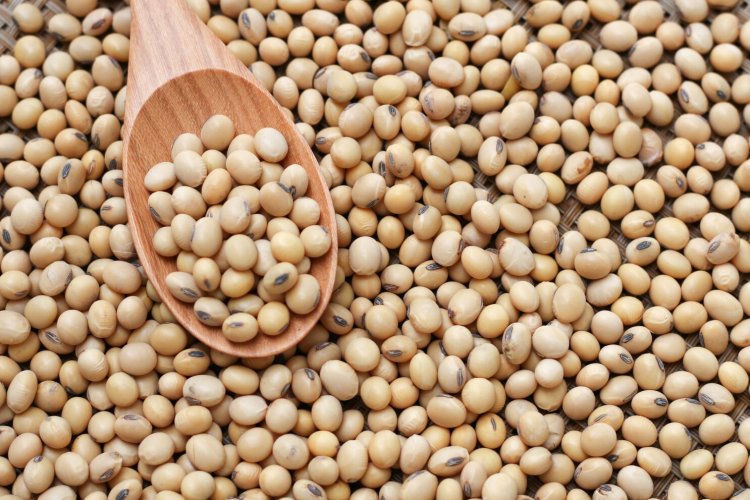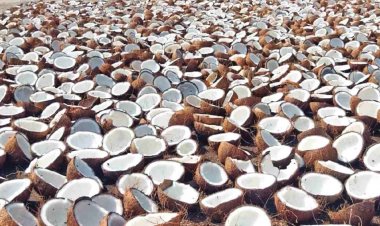The arrival of new soybean crop in the market is very less. Due to very less rainfall in August, early soybean has suffered a lot in major producing states like Madhya Pradesh, Maharashtra and Rajasthan, due to which there is every possibility of drop in production. Despite this, the price of soybean is falling below the Minimum Support Price (MSP) by up to Rs 1,000 per quintal. In view of this, farmers are waiting for the prices to increase. The increasing import of soybean is also having an impact on the market price.
Soybean is the main oilseed crop of Kharif season. In the agricultural produce markets of Madhya Pradesh, traders are purchasing soybean from farmers at Rs 3,500-4,500 per quintal depending on the quality. For the Kharif season 2023-24, the government has increased the MSP of soybean by Rs 300 to Rs 4,600 per quintal as compared to the previous season. However, the truth is also that soybean is not procured by government agencies anywhere in the country, whereas mustard, the main oilseed crop of Rabi season, is procured by the government at MSP.
Yogesh Dwivedi, CEO of Madhya Bharat Consortium of FPOs, told Rural Voice, “The soybean crop currently coming in the markets is an early variety which gets ripe in 90 days. This variety has been mostly affected by the drought-like conditions in August due to which the grains have become smaller and have also shrunk. Due to this, productivity has been affected. Long (120 days) and medium (105 days) crop conditions are better than this. It is not coming in the markets right now. Their arrival will start after 15 days.”
Regarding the current price of soybean, he said that usually the price increases in case of decline in production, but this year it is not so because cheap soybean is being imported indiscriminately, the effect of which is visible on the market. Due to this the farmers of the country are suffering losses. However, this year quality is also a reason due to which farmers are getting lower prices.
Soybean Processors Association of India (SOPA), the apex organisation of soybean processing industry, has estimated the total production of soybean to decline by 4.3 per cent to around 118 lakh tonnes in 2023-24 as compared to 2022-23. The total production of soybean in 2022-23 was 124.11 lakh tonnes.
SOPA says that due to monsoon conditions not being completely favorable for the crop during the current Kharif season, the average productivity rate of soybean in Madhya Pradesh, Maharashtra and Rajasthan is likely to decrease. SOPA estimates its average yield rate to decline by 7.5 per cent. According to government data, this year the area under soybean has increased by about 1.25 lakh hectares to 125.40 lakh hectares but SOPA says that the actual area has been 118.55 lakh hectares.
Maximum production of soybean is in Madhya Pradesh. It is cultivated the most in the Malwa-Nimar region of the state. This area includes the districts of Dhar, Jhabua, Ratlam, Dewas, Indore, Ujjain, Mandsaur, Sehore, Shajapur, Raisen, Rajgarh and Vidisha.
Manmohan Sharma, a soybean farmer from Ahmedpur village in Vidisha district, told Rural Voice, “The price of soybean in Vidisha mandi is currently running at Rs 3,500-3,600 per quintal. Due to less rain in August, about 25 per cent of my crop has been damaged.
"Although my crop has not been harvested yet, if this trend continues then I may have to suffer double loss. On one hand, there is every possibility of production decreasing, on the other hand, low prices will also have to suffer. Usually the average production of soybean is 2.5-3 quintals per bigha, but this year the production is up to 50 kg per bigha.”
According to the latest data from Solvent Extractors Association of India (SEA), the apex organisation of edible oil producers, soybean oil import has increased from 3.42 lakh tonnes to 3.58 lakh tonnes in August 2023. In the first ten months (November 22-August 23) of the current oil year (November 22- October 23), the total import of edible oils has increased by 24 per cent to 141.21 lakh tonnes. In the same period of last year, it was 113.76 lakh tonnes.
SEA estimates that 160-165 lakh tonnes of edible oil may be imported into the country in the current oil year. India is the largest consumer of edible oils and imports about 65 per cent of its edible oil requirement.




 Join the RuralVoice whatsapp group
Join the RuralVoice whatsapp group









































